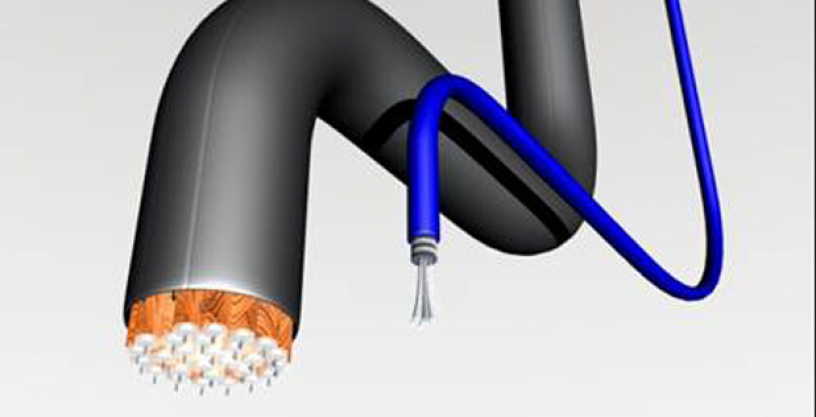
Program Summary
Conventional military radio frequency (RF) antenna systems typically employ coaxial cable as the signal conduit between the aperture and the transmit/receive electronics. For long cable lengths, high RF frequencies and wide bandwidths, the cable itself is a key limiter of signal fidelity and link efficiency. Coaxial cable bundles are also large and heavy, a critical drawback for mobile platforms. Photonic technologies, however, may provide low loss, reduced size and weight, immunity to electromagnetic interference, broad bandwidth and overall ability to remote antennas over distances not possible with conventional electronic approaches. To realize the full potential of photonic transport of analog signals, however, such signals must be transported without loss of fidelity and without incurring large electrical-to-optical-to-electrical conversion losses as encountered with state-of-the-art analog photonic links.
The DARPA TROPHY program seeks to develop optical hardware that is selectively optimized for transmit and receive applications in advanced RF systems. Such hardware includes high fidelity electrooptic modulators and photodetectors. These advancements will pave the way for a common photonic conduit for RF signal processing allowing for further capacity increases through wavelength division multiplexing.
The overall goal of the TROPHY program is to enable the transmission and reception of signals from 0.1 GHz to 100 GHz through component development and innovative link architectures that will still allow the use of standard backend switches and digitizers. To achieve this goal, TROPHY aims to develop:
- Linear and efficient phase and amplitude modulators
- High-power photoreceivers with a large third-order output intercept point (a measure of the linearity of a link or a device)
- Integrated link techniques that allow for the remote photonic delivery of RF signals over distances of at least 10 meters without compromising the linearity and efficiency of the link
TROPHY links should provide better linearity and noise characteristics than state-of-the-art RF links over coaxial cable and while also allowing access to higher frequency signals.
Trophy began in 2010. The program is in phase two of two.
This program is now complete
This content is available for reference purposes. This page is no longer maintained.
